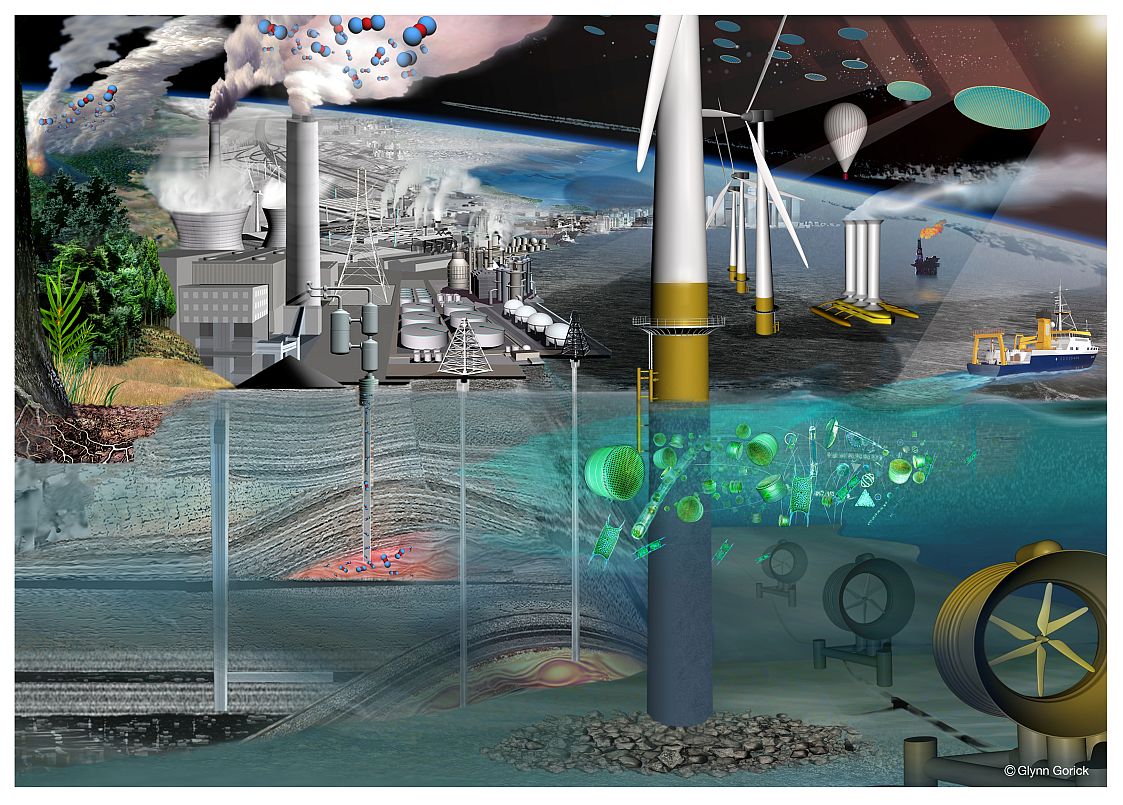Illustrations
- Details
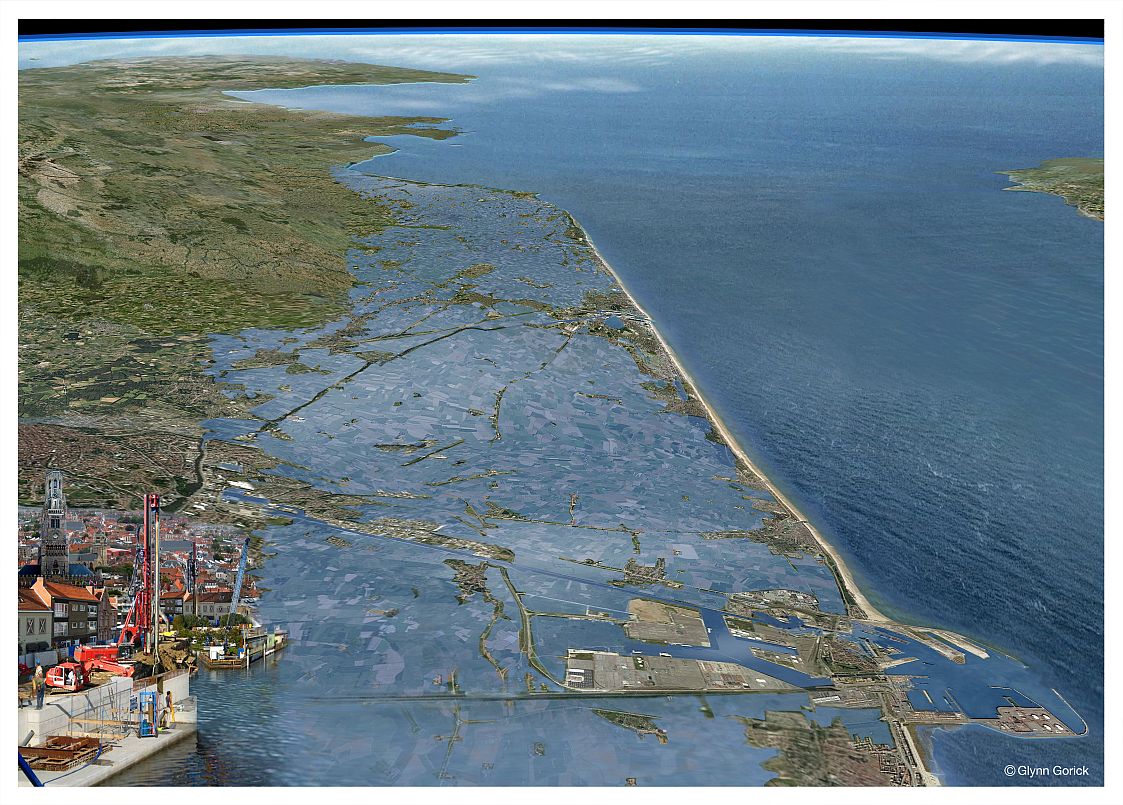 |
As warm seas expand and glacial ice melts, sea levels are rising. The image shows the potential effect of a sea level rise of 1m by 2100 for the coastline between Zeebrugge and Calais. Developing appropriate sea defences will prevent flooding. |
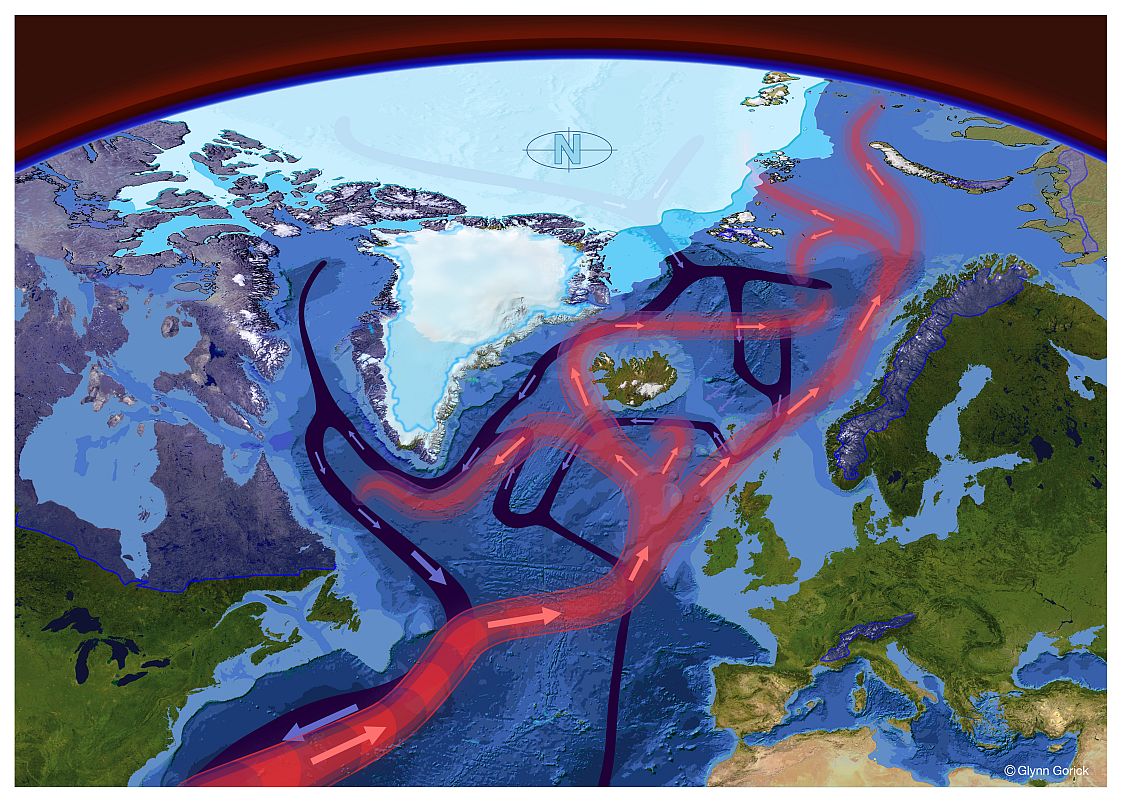 |
The main engine for the Earth’s ocean circulation is found in the northernmost North Atlantic. Here the warm North Atlantic current, that ensures the warmth of Europe, cools at the edge of the Arctic, becomes denser (heavier) and sinks to return south as a deep counter-current along the eastern edge of North America. Rising temperatures are melting the Greenland ice sheet, permafrost and sea-ice, producing greater freshwater flows into the Arctic and changing these currents. |
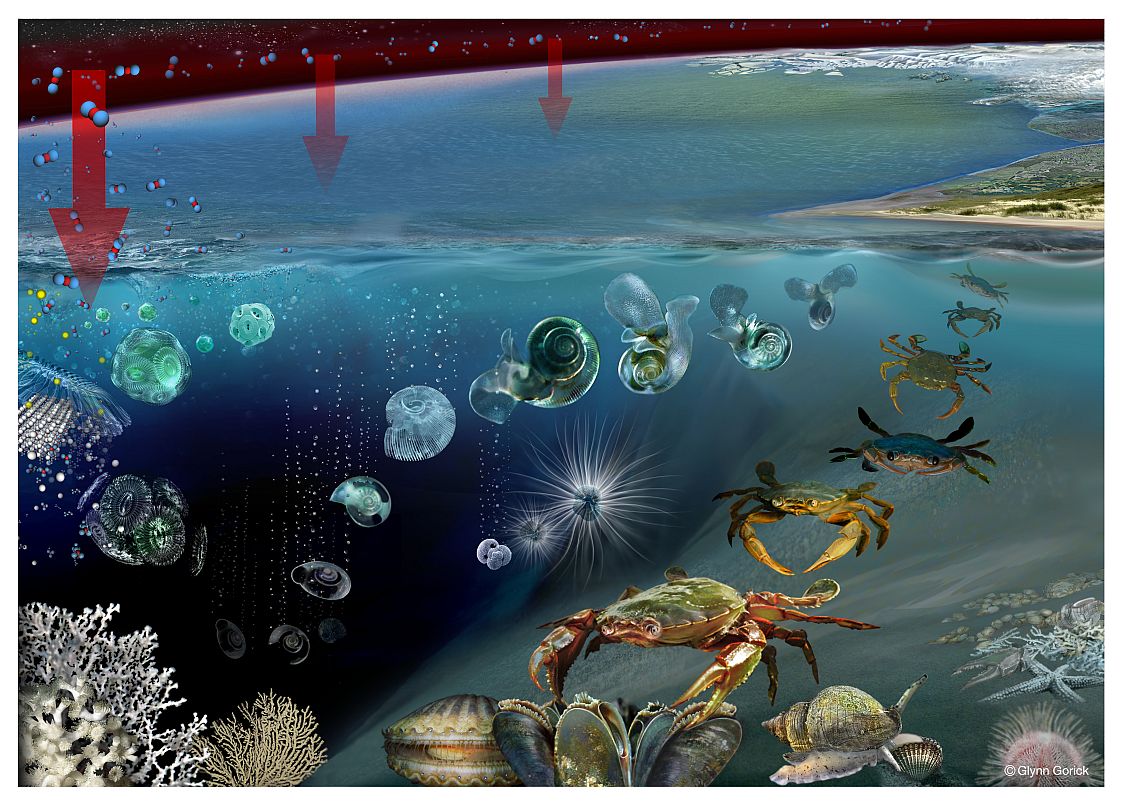 |
Atmospheric carbon dioxide, dissolving in seawater and reacting with it, produces more hydrogen ions, raises acidity, and reduces the availability of calcium carbonate for plants and animals to make hard shells. Ocean acidification is expected to have severe consequences for many marine organisms, especially for planktonic pteropod molluscs in the Arctic and cold water corals. |
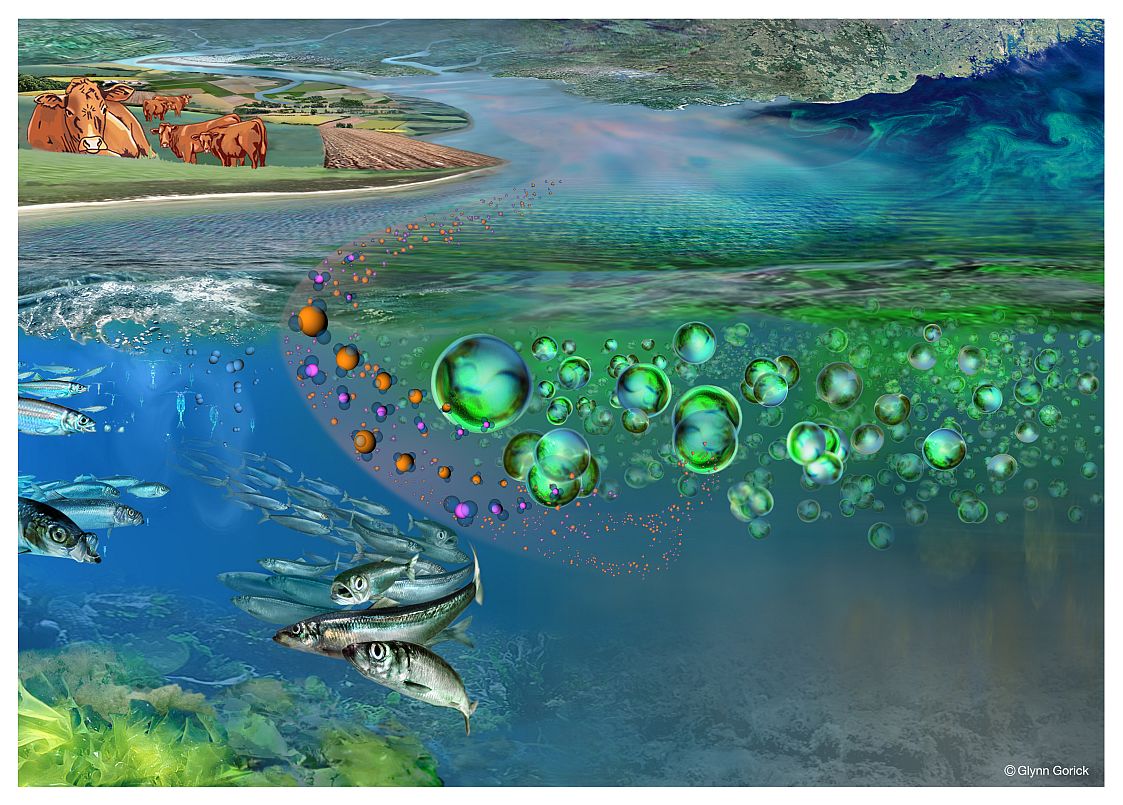 |
Nitrate and phosphate nutrients seeping into rivers from farm animal waste, fertilisers and sewage plants boost excessive growth of phytoplankton plant cells such as Phaeocystis in coastal and estuarine waters. These large blooms disrupt the food web, potentially impact tourism and can severely damage aquaculture systems. |
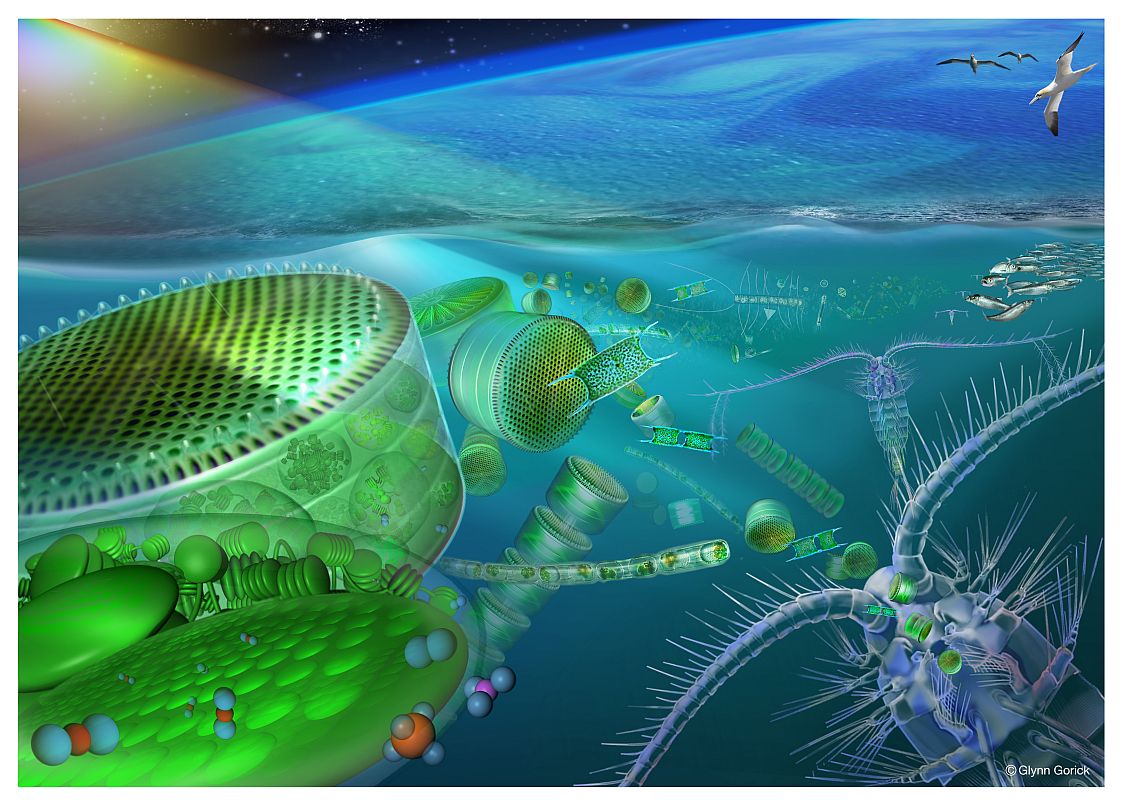 |
Microscopic marine plants (phytoplankton) make the oxygen in every second breath we take. Packed with chlorophyll, they harvest the red and blue photons in sunlight to drive their photosynthesis. Fuelled by CO2 and nutrients derived from deeper water, their growth provides food for virtually all living organisms in the sea, including the fish we eat. Satellites provide a bird’s eye view of how global patterns of chlorophyll are responding to climate change. |
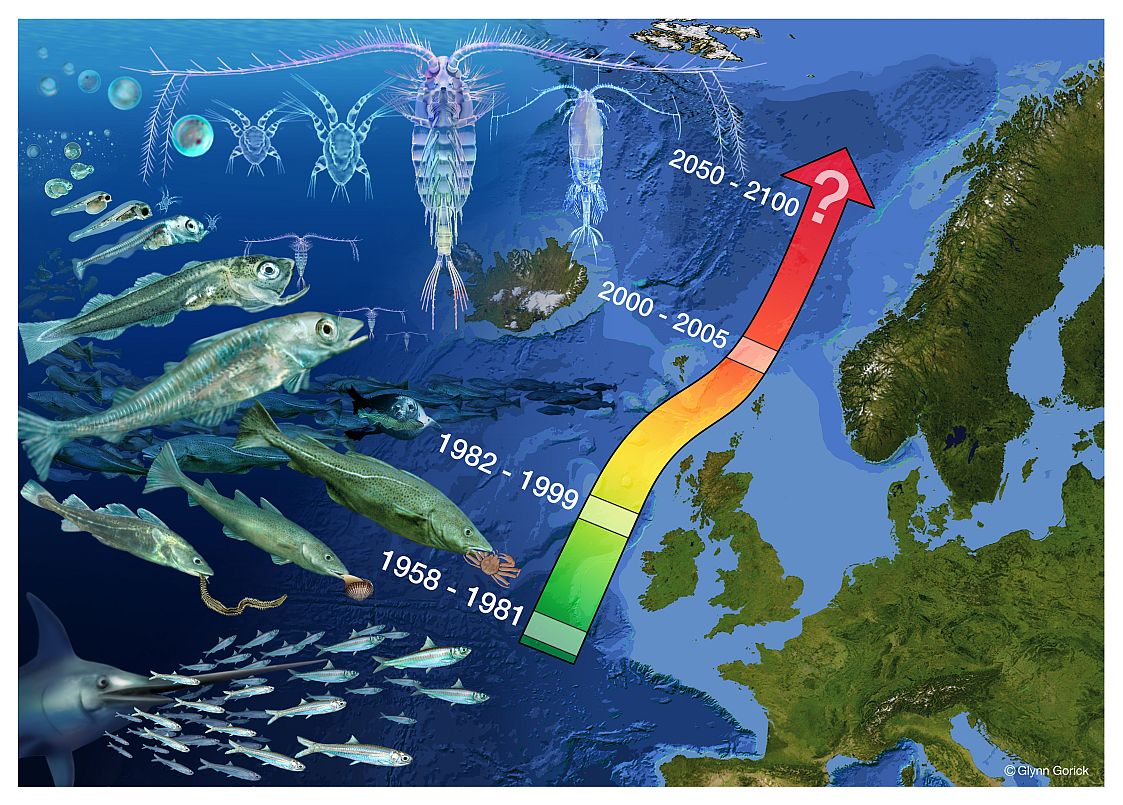 |
Higher temperature and changes in currents at the edge of the European shelf have caused plankton more characteristic of warmer water to extend their range to the north of Shetland, a shift of 1000 km between the 1970s and 2000/2005. At the same time, the shrimp-like Calanus finmarchicus, abundant in colder water and an important food for fish – especially the larval stages of cod – has retreated towards the pole. |
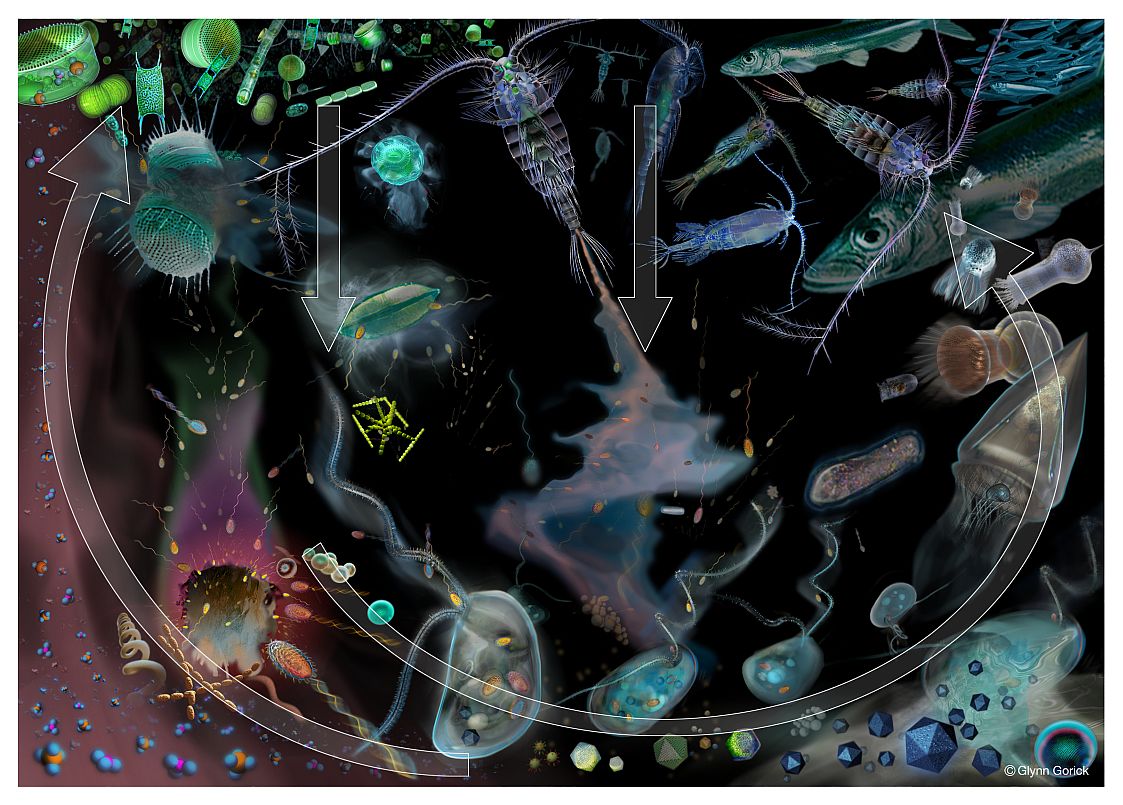 |
Huge numbers of diverse microbe species, including ciliates, bacteria and viruses, rule the oceans. They provide a vital service by processing waste and dead material, with bacteria for example grazed on by ciliates, which in turn become a secondary food source for larger animals in the sea. Predatory viruses burst infected cells to release nutrients, making them available again for phytoplankton growth. |
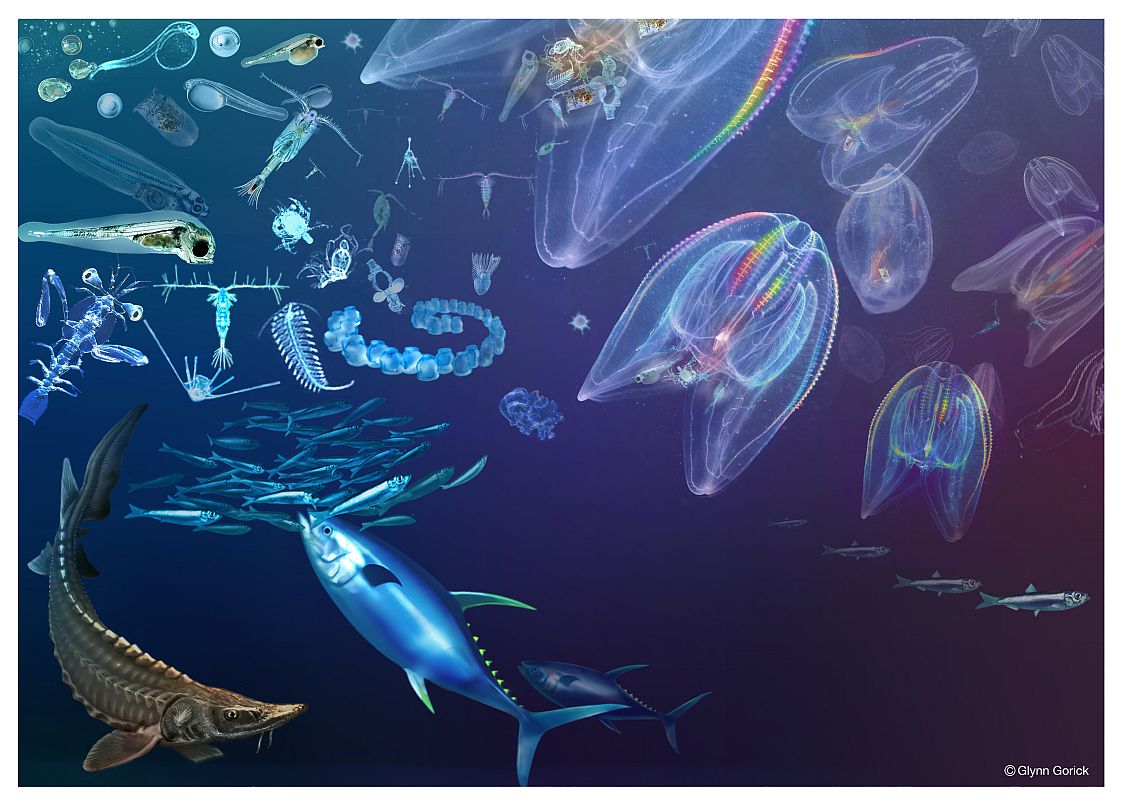 |
In recent decades, the increasing occurrence of jellyfish blooms has been correlated with rising sea temperature. They have caused major problems for fisheries, aquaculture and tourism. A complete collapse of the Black Sea fishery in the late 1980s has been attributed, along with overfishing, to massive blooms of the comb jelly Mnemiopsis leidyi vacuuming up zooplankton, eggs, and fish larvae. |
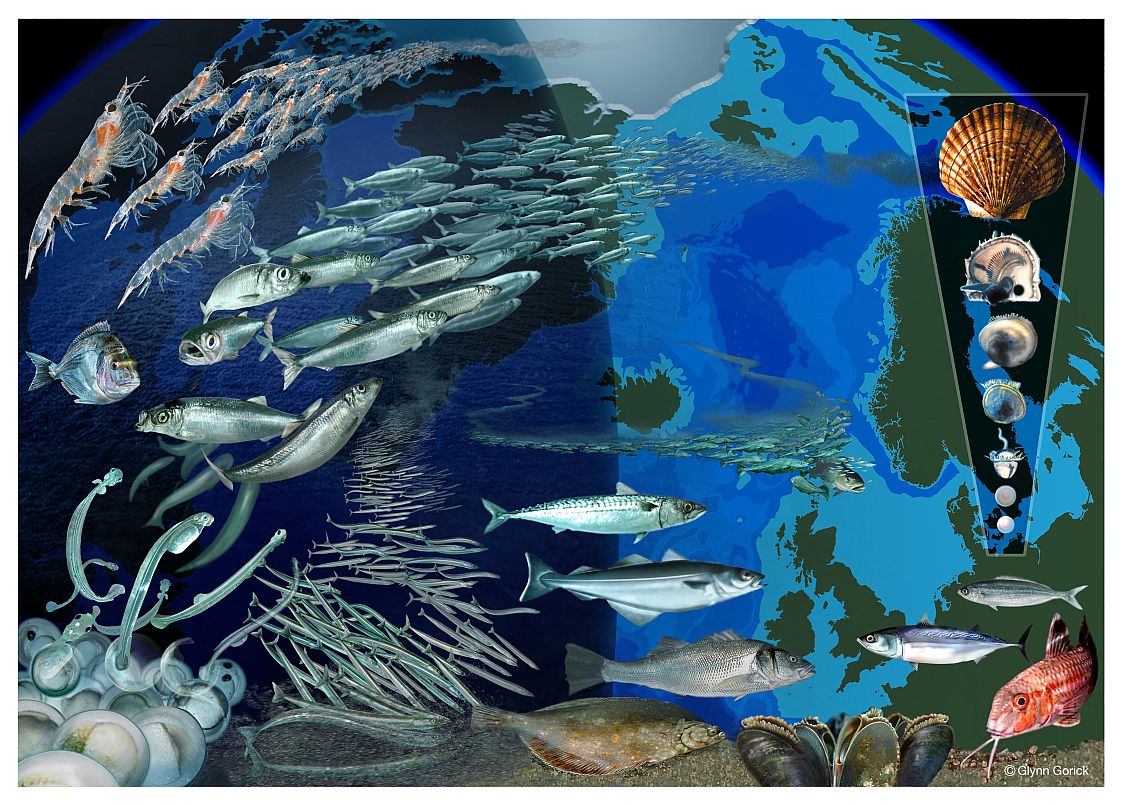 |
There is clear evidence from all European seas that rising temperatures, along with overfishing, are causing substantial changes to fish stocks such as herring, sand eels and cod, as well as to their ranges and migration routes. Warmer water fish species are gradually moving north so that unfamiliar fish species are now appearing on fish market stalls. |
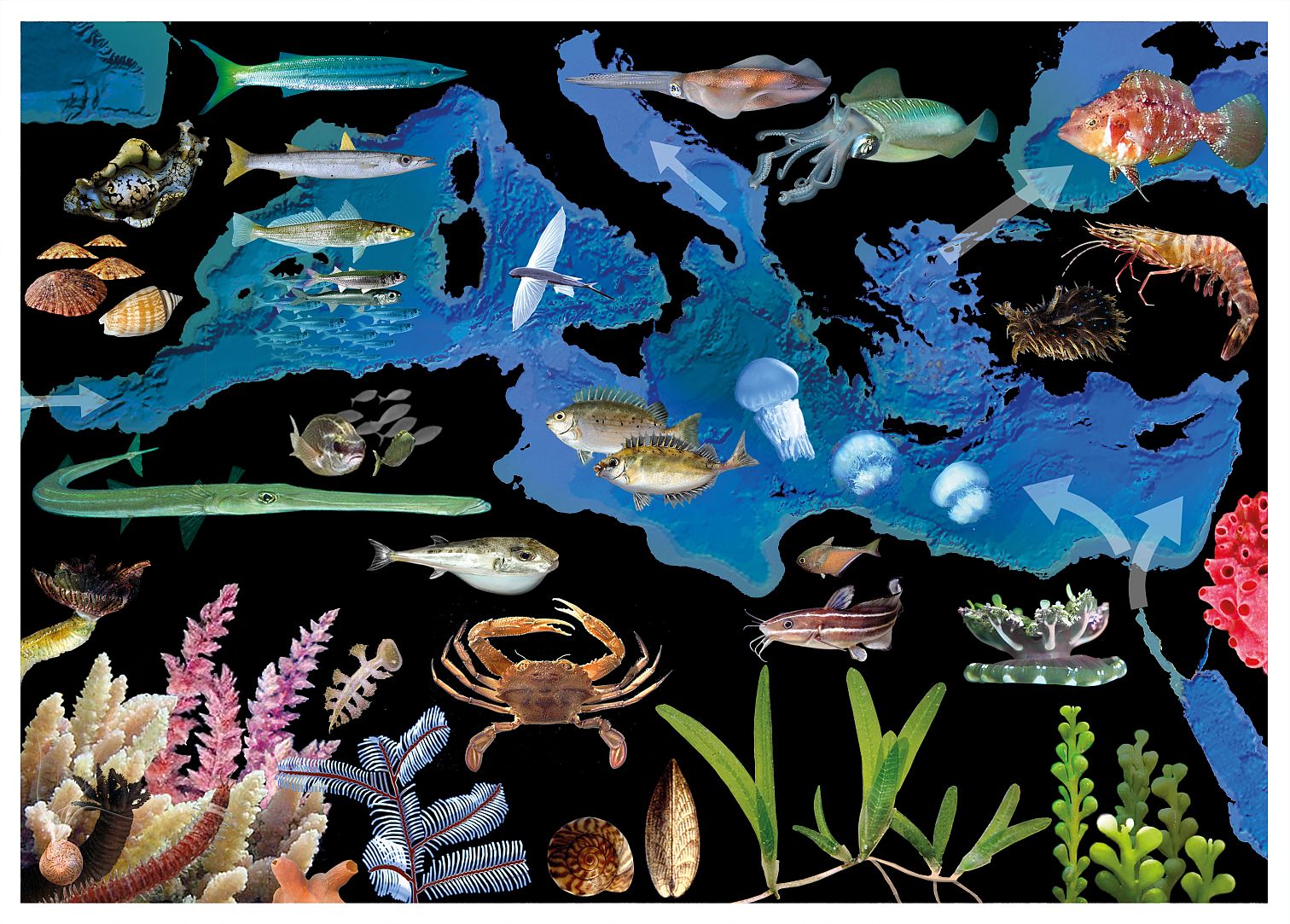 |
Tropicalisation of the Mediterranean has led to a rapid increase in invasions of non-native species from the Red Sea via the Suez Canal. More than ten new species arrive each year. Recent finds include the white stinger hydroid and a poisonous puffer fish. White stinger = Macrorhynchia philippina Puffer fish = Lagocephalus sceleratus |
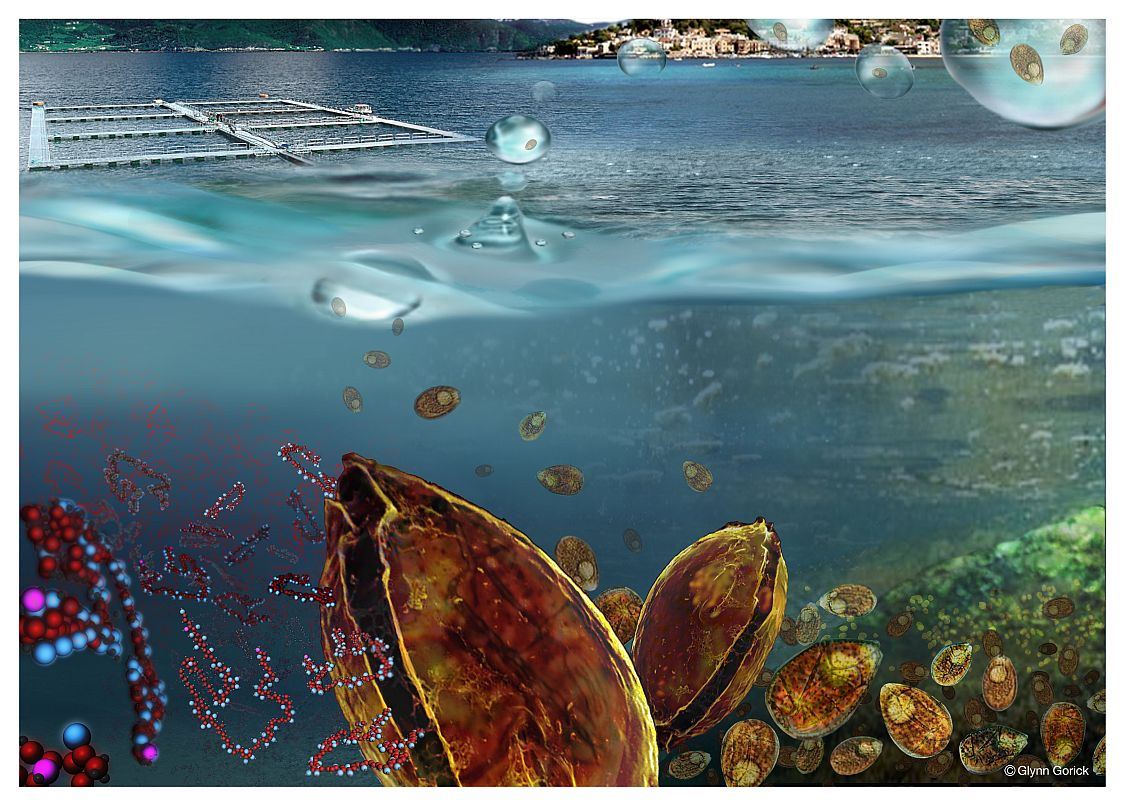 |
Harmful algal blooms, some of which produce poisons can have serious economic consequences for aquaculture and beach tourism. No clear relationship has been found between their occurrence and climate change, but some subtropical species such as Ostreopsis are now found in the Mediterranean. Toxins from this species may cause dermatitis in bathers and respiratory problems for tourists on beaches when released in aerosols. |
|
|
The oceans provide a vast and untapped resource of renewable energy production from offshore wind and tidal turbines, wave-energy harvesting devices and algal production, all developing rapidly to help reduce our carbon footprint. A range of global scale engineering projects has been proposed as a stopgap to counteract the effects of rising CO2 by reducing the energy absorbed by the Earth from the sun or by harvesting and long-term storage of CO2. |
|
All illustrations are created by Glynn Gorick. The images can only be used for non-commercial use and after permission is requested from Glynn Gorick. The images can only be used with crediting the source "© Glynn Gorick" For further information please contact This email address is being protected from spambots. You need JavaScript enabled to view it. and This email address is being protected from spambots. You need JavaScript enabled to view it.
|

